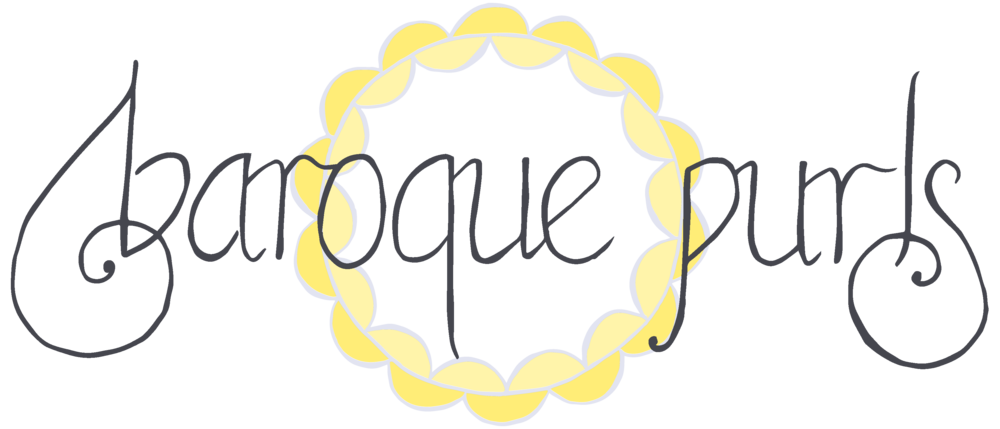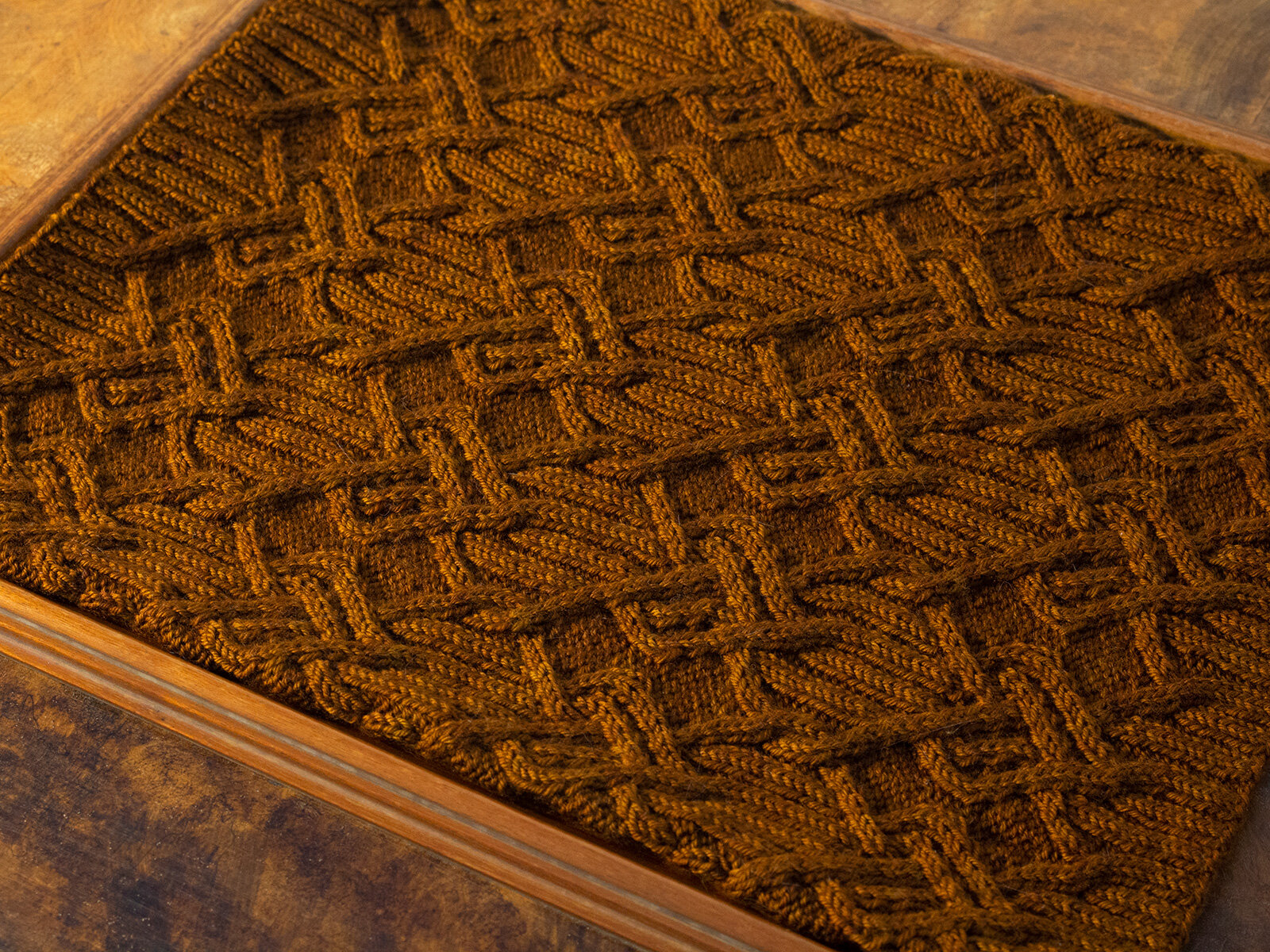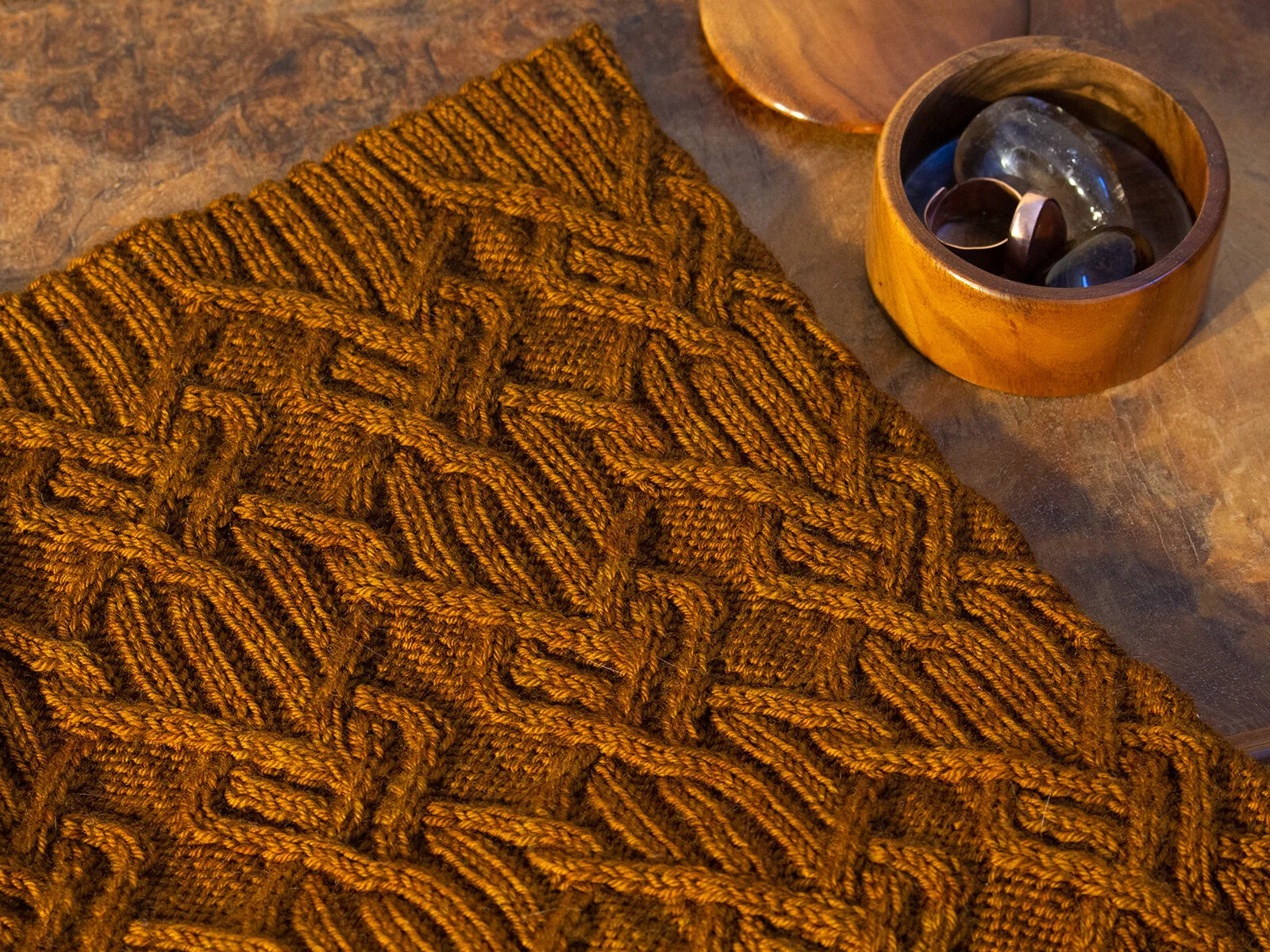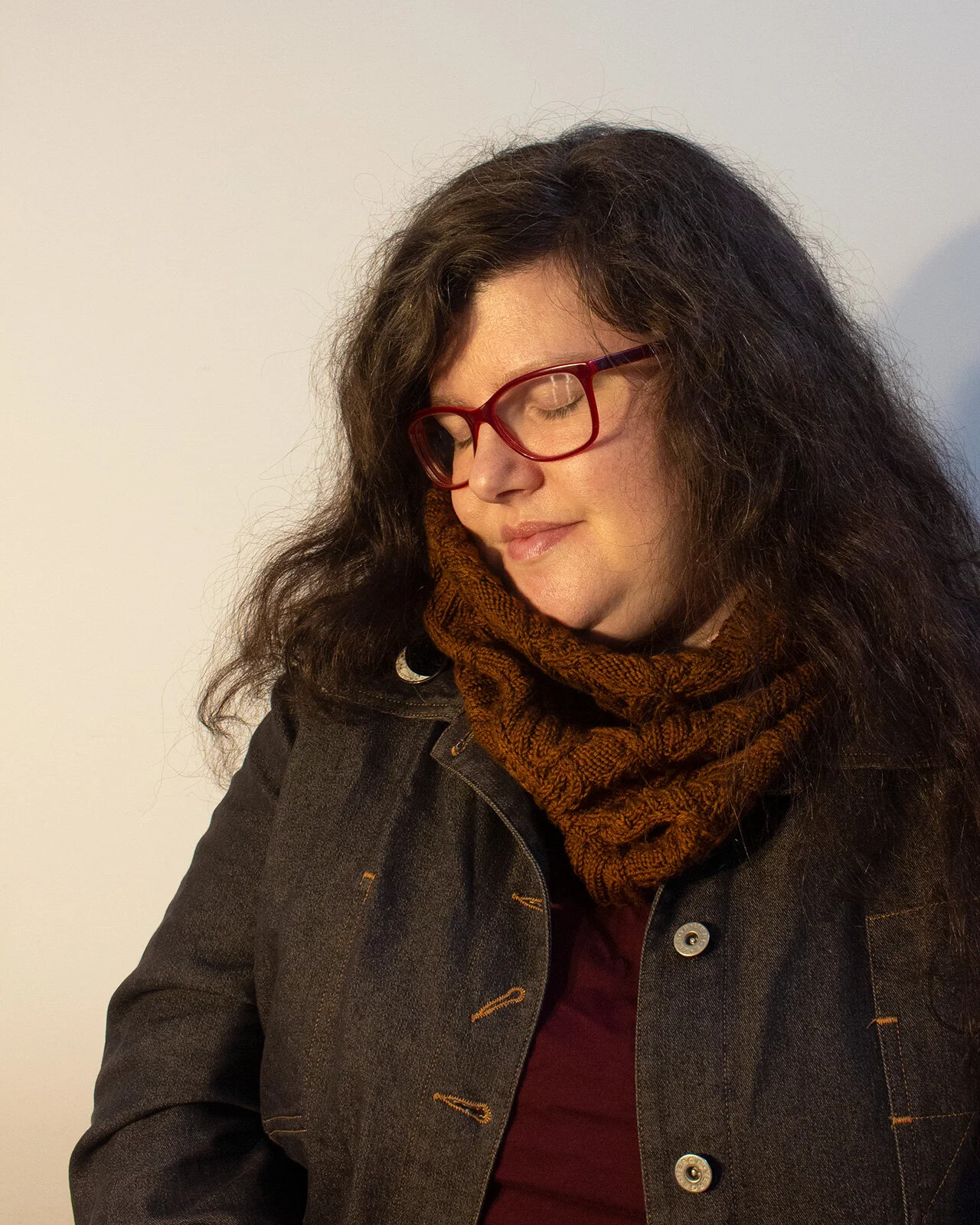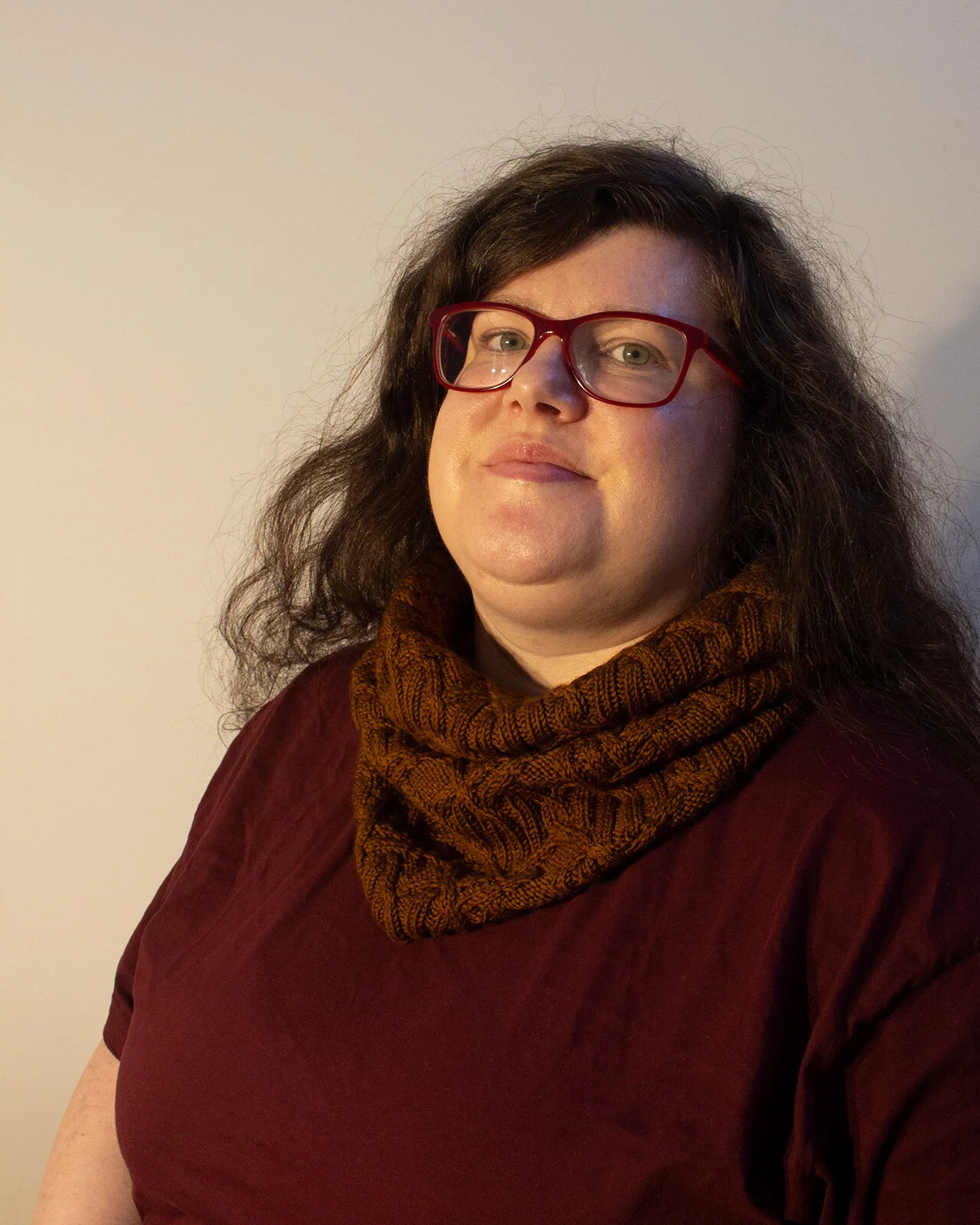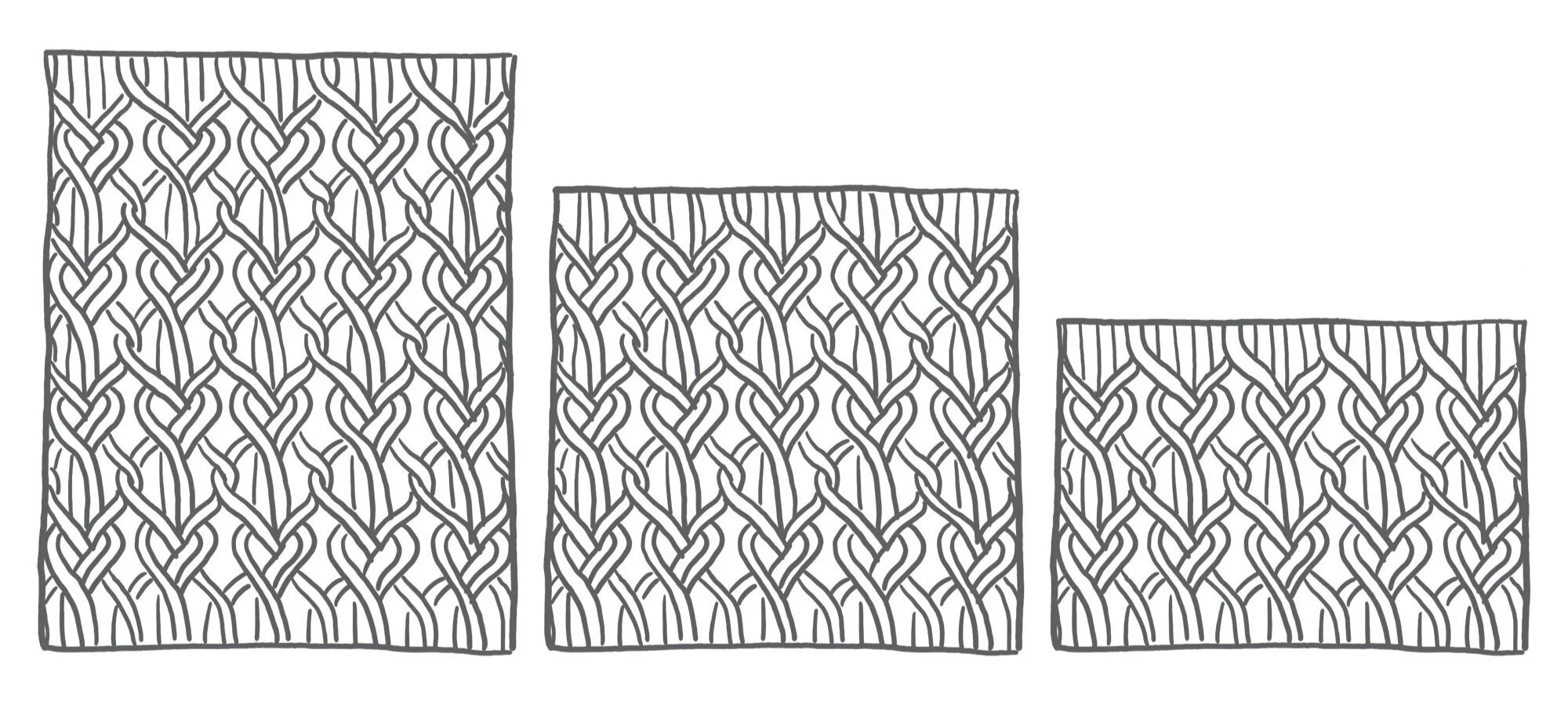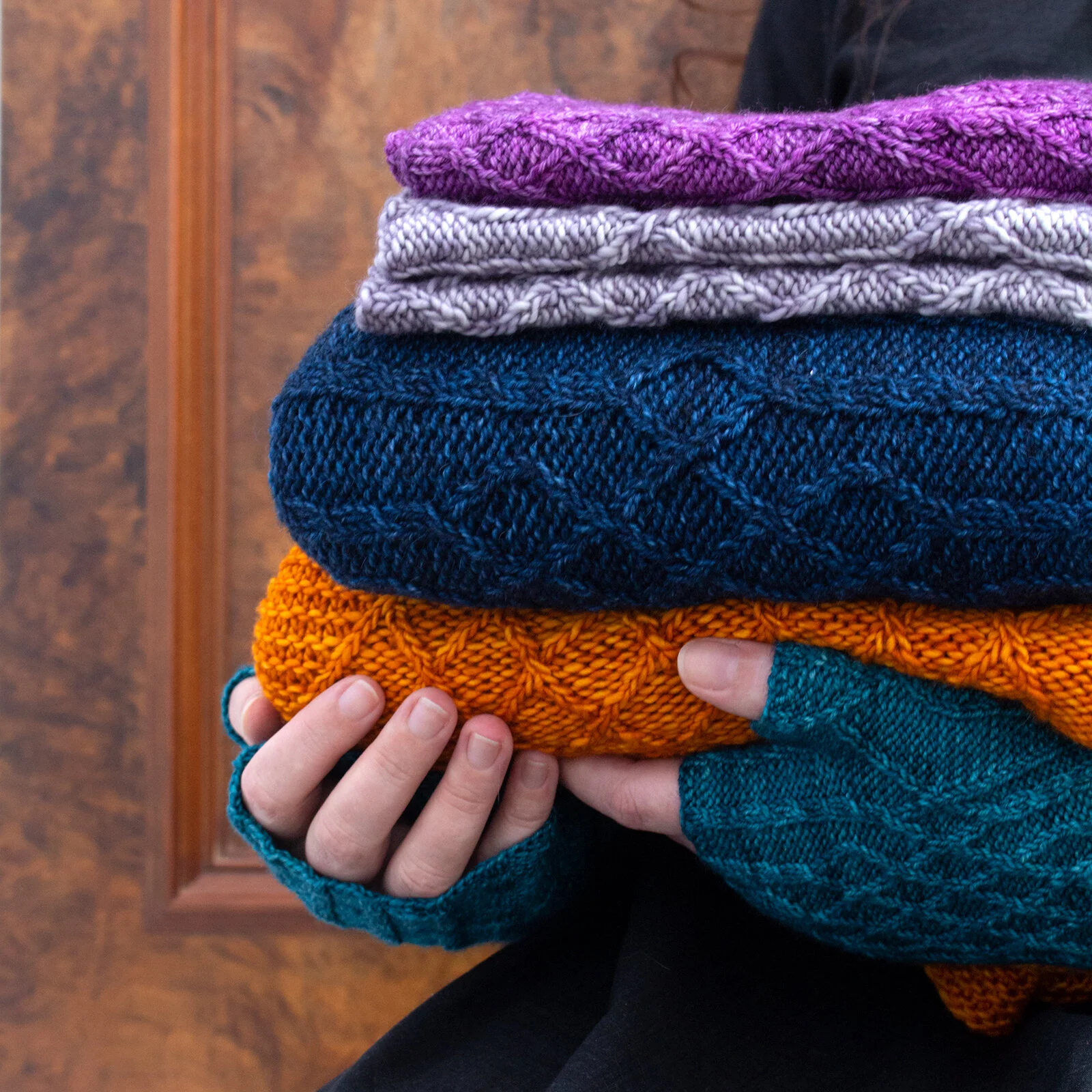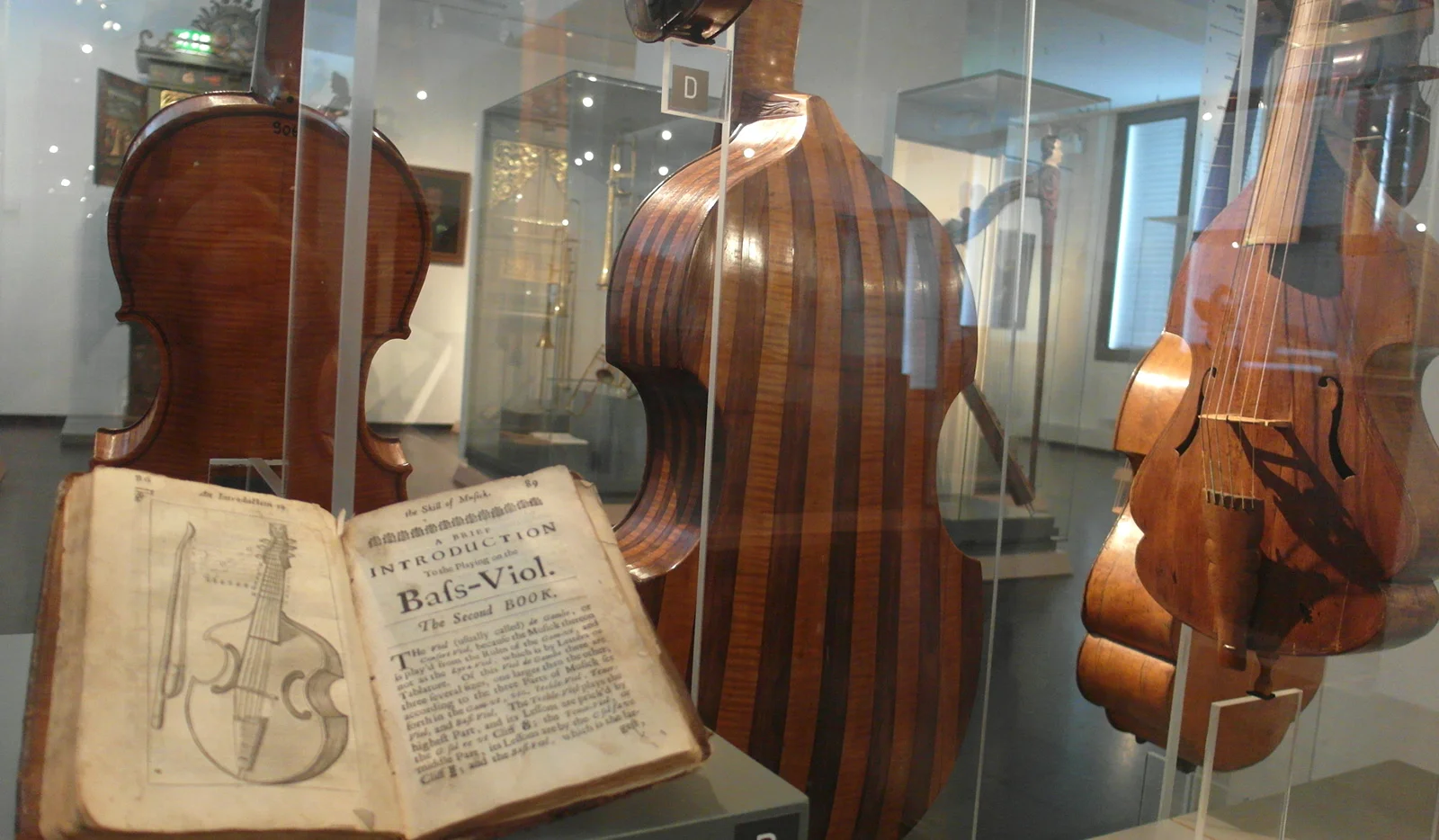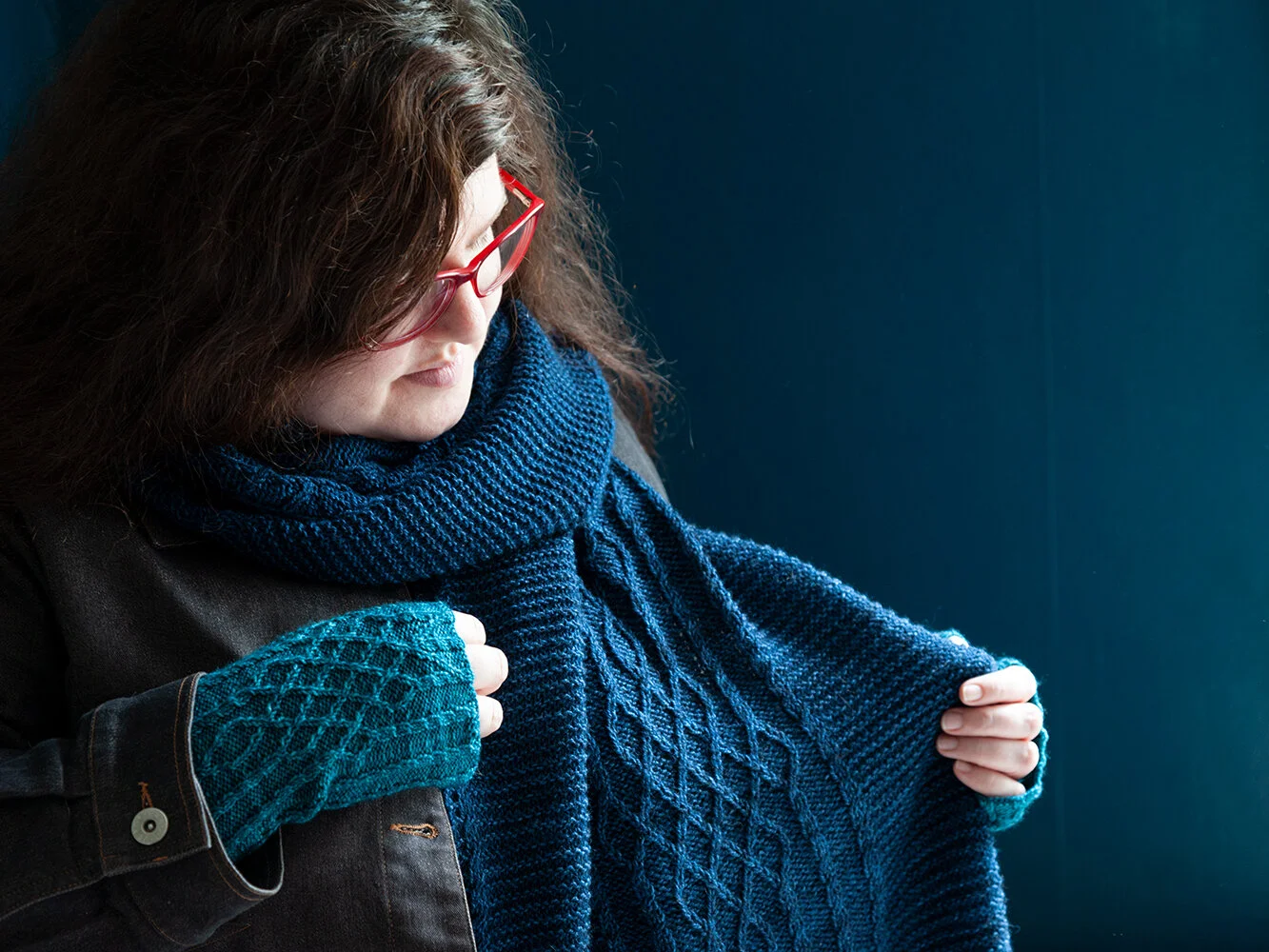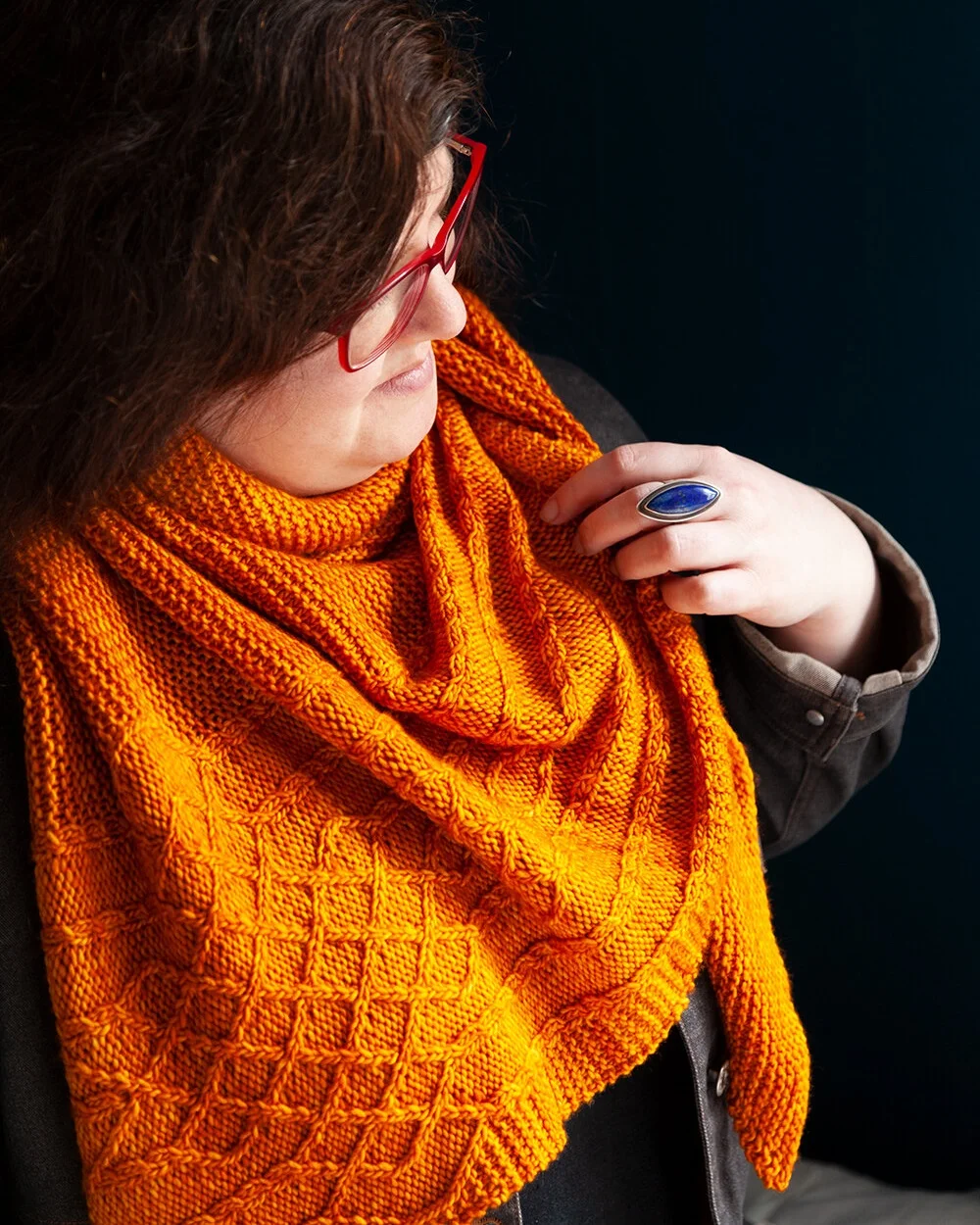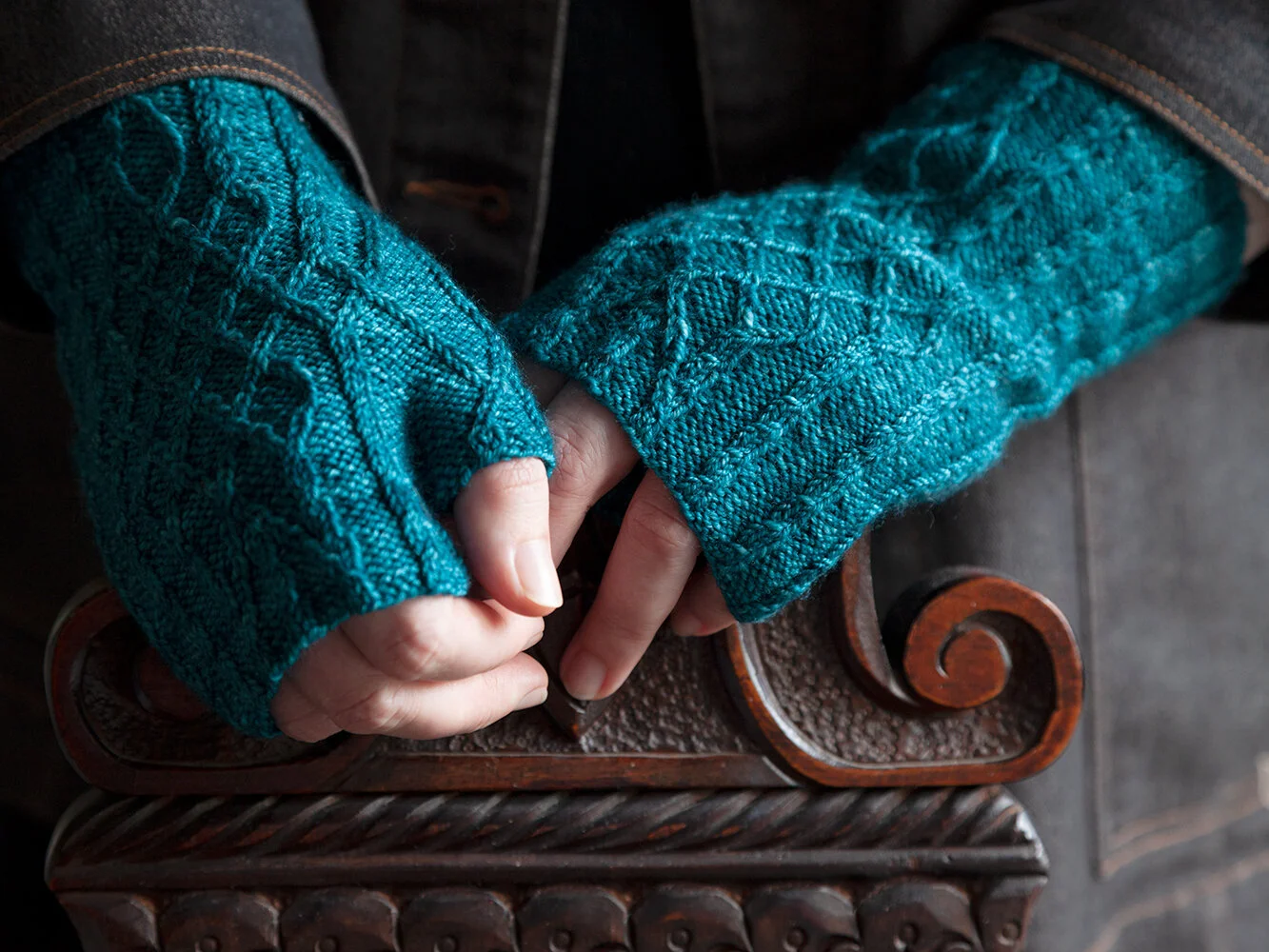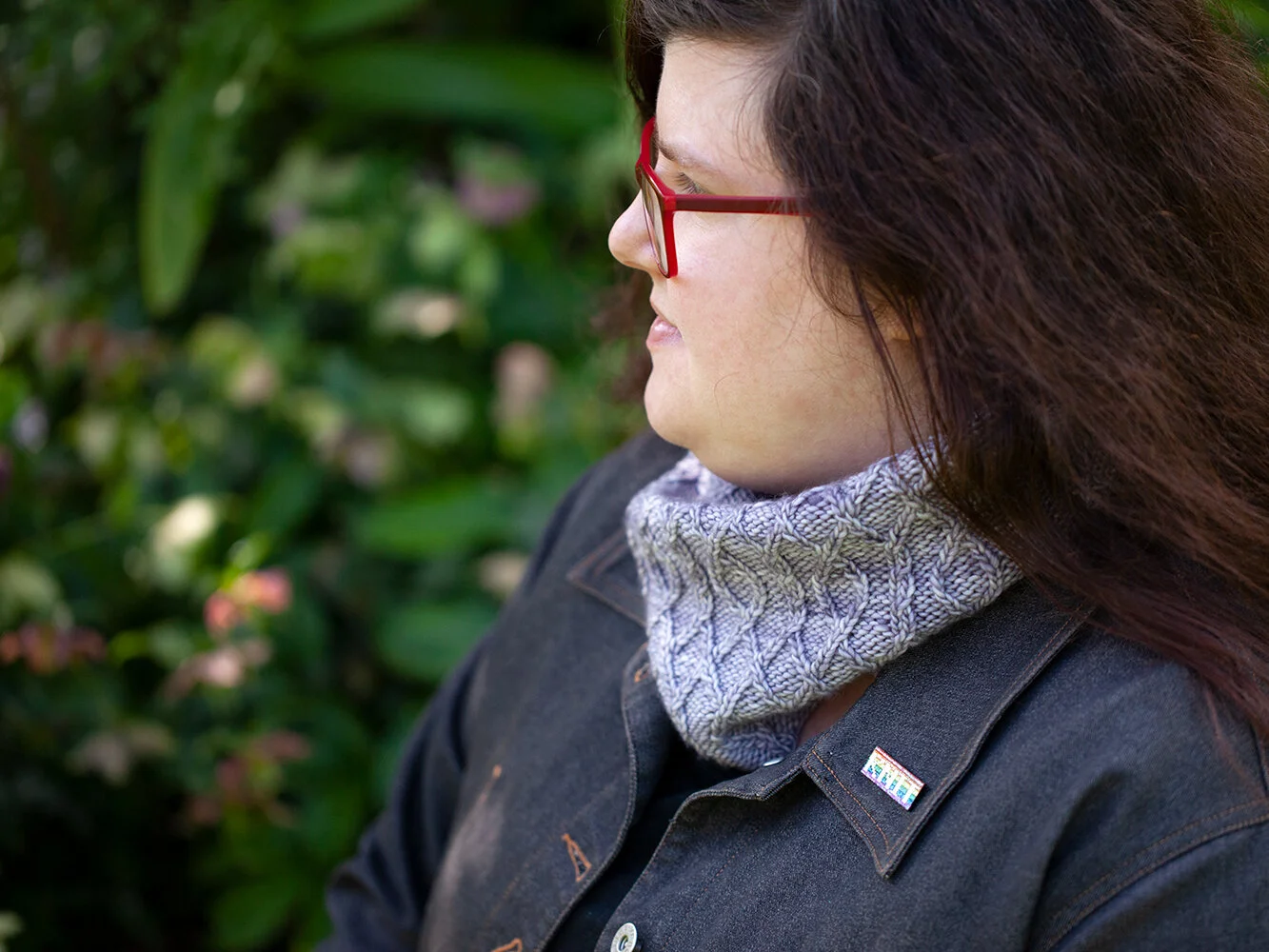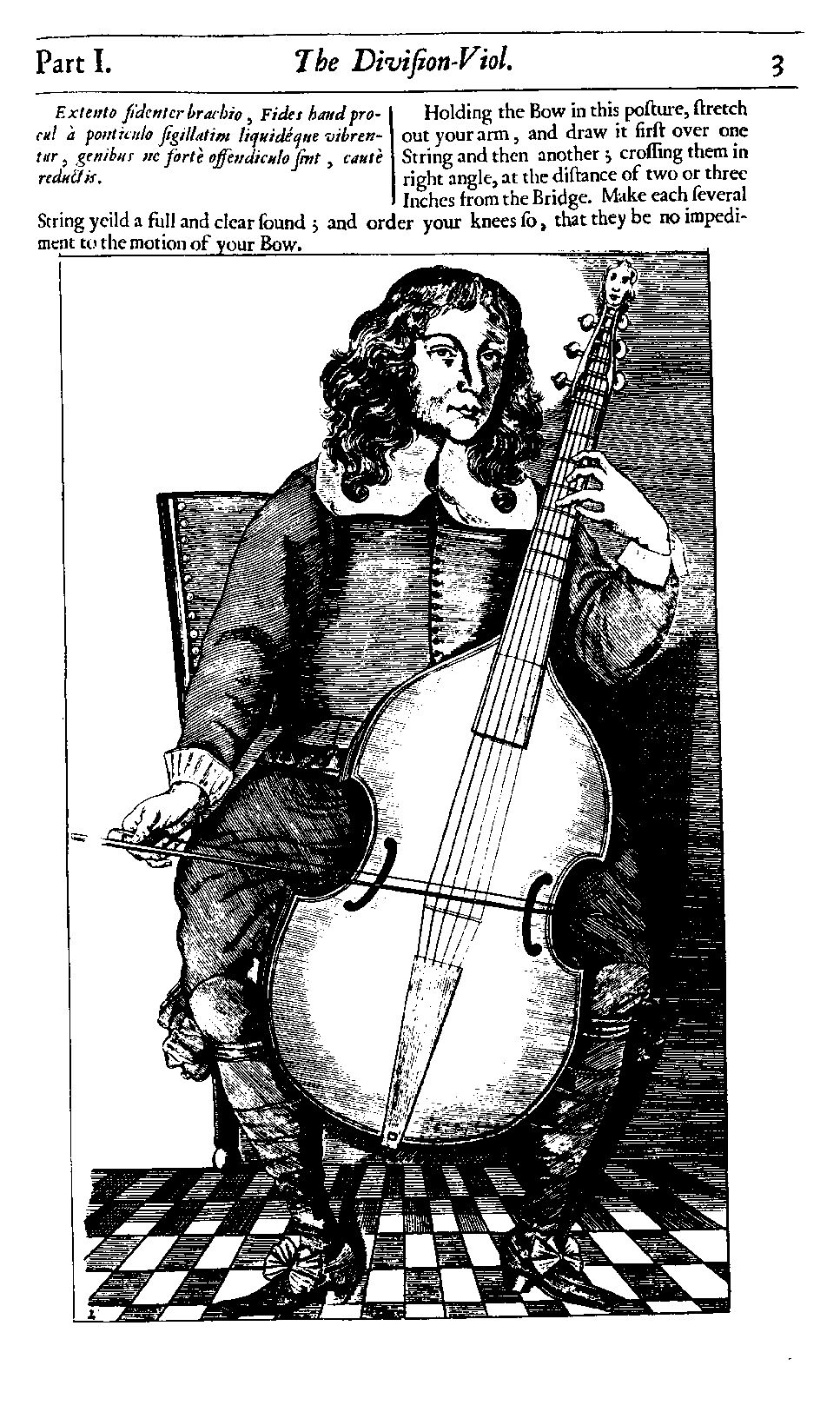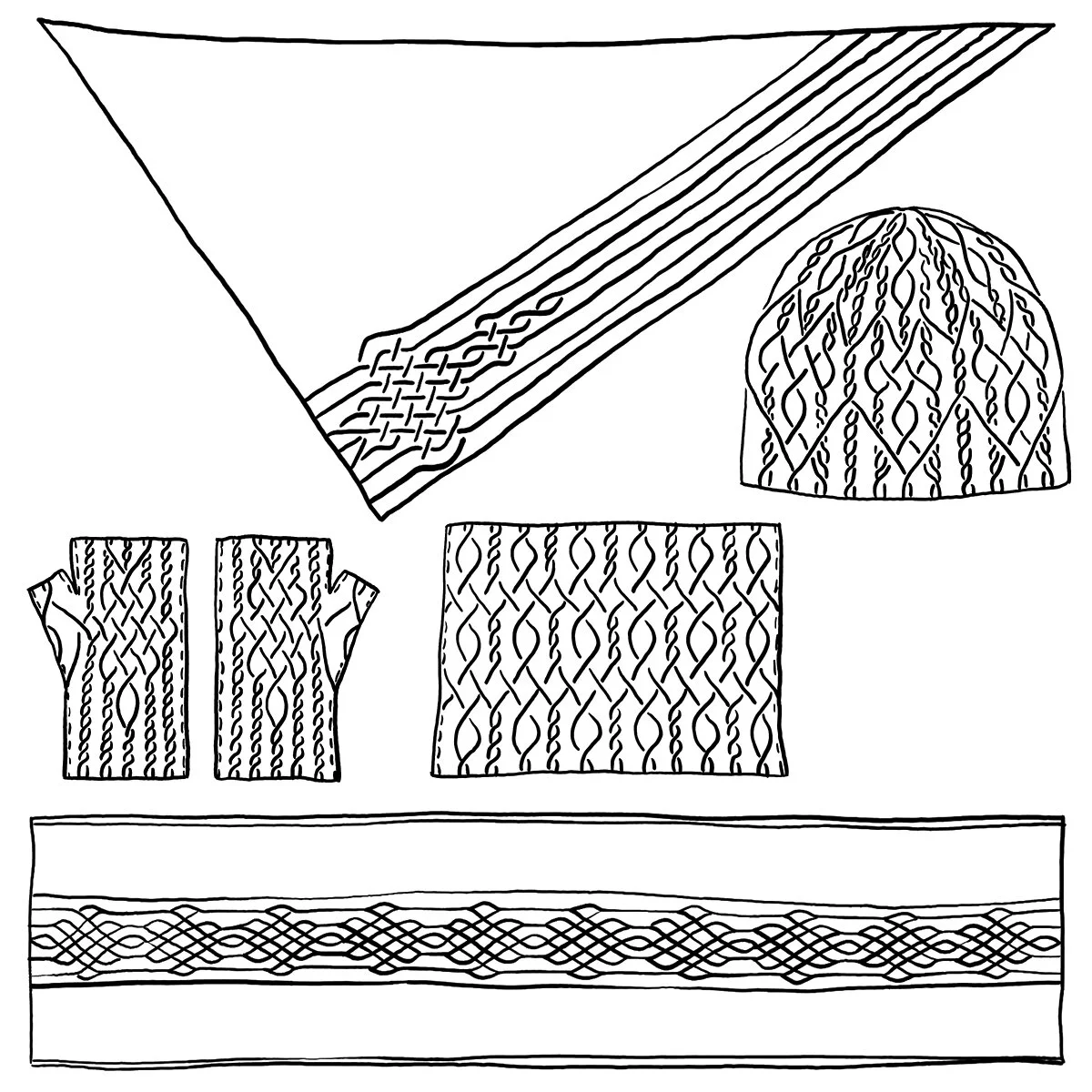It’s one year to the day since I released my Heartwood Cowl design, and at long last it has its companion hat! Introducing the Heartwood Hat, a cosy, deeply-textured beanie in DK-weight yarn featuring an all-over pattern of cabled hearts entwined with ribbing.
I actually started working on the hat design long before the cowl, but got bogged down in puzzling out the crown decreases. After a lot of unsuccessful swatching I put the hat to one side and concentrated on the cowl, and just before that pattern was ready to publish I was struck by a new idea for the hat! Sometimes sleeping on a puzzle takes rather a lot of sleeps before the brain spits out a solution. And here it is: some ribbing, a few twists, and some petal shapes in between.
The Heartwood Hat sample blocking over a balloon.
A tip from my fabulous test knitter Myriam (strickeyhands on Ravelry): if you find your stitches look a little sloppy in the crown decreases section, switch back to your smaller needles.
The yarn I used for the sample is once again from the fabulous Aussie dyer Happy Hank Co. To knit the larger size I used one 100g skein of Classy DK, but you could also use fingering-weight yarn held double, as one of my test knitters did to great effect. Classy DK is a smooth, multi-plied, superwash merino yarn, and the colour, Soba, is a very gentle pale pink. To really show off the complex cables I recommend choosing a solid or near-solid colourway, or some subtle speckles.
Two sizes are included in the pattern, and the larger size is comfortable and slightly slouchy on my 22”/56cm diameter head. It’s long enough to wear with the brim pulled down for cosiness or with a short turn-up.
Skills needed to work this pattern include the Long Tail Cast On (or your favourite for 2x2 ribbing), working in the round, working 2-over-2 cables and a few six-stitch cables, and working decreases. Both charts and full written instructions are included.
Heartwood Hat features:
a beanie hat knit in the round from the bottom up, with an all-over texture of cabled hearts and ribbing
two size options are included in the pattern, each using only a single 100g skein
requires 167 (200)yds/153 (183)m of DK-weight yarn (shown in Happy Hank Co Classy DK)
choose a smooth, multi-plied, worsted-spun yarn in a solid or near-solid colour
hat dimensions, relaxed after blocking and unstretched: 15 (18)”/38 (46)cm brim circumference, and 8.5”/21.5cm length from cast-on to crown, to fit 18-20 (21–23)”/46-51 (53.5-58.5)cm head circumference. Sample shown in larger size on my 22”/56cm head
charts and written instructions are both provided in full.
Find out more about my Heartwood Hat pattern, including Ravelry and Payhip purchase options.
